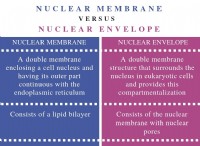1。 DNA Replication: The cell must first duplicate its entire genome – the complete set of DNA instructions – so that each daughter cell receives a full copy. This occurs during the S phase 細胞周期の。
2。染色体凝縮: The duplicated DNA, which is normally loosely organized as chromatin, is tightly packed into chromosomes 細胞分裂中にDNAが均等に分布するようにします。
3。 Spindle Formation: The cell assembles a microtubule structure called the spindle that will help separate the chromosomes. This spindle is essential for proper chromosome segregation.
4。 Nuclear Envelope Breakdown: The membrane surrounding the nucleus (the nuclear envelope) breaks down, allowing the chromosomes to become accessible to the spindle fibers.
5。 Chromosome Alignment: 重複した染色体は細胞の中心に並んでおり、各娘細胞が各染色体の1つのコピーを受け取るようにします。
6。姉妹染色分離: The duplicated chromosomes (sister chromatids) are pulled apart by the spindle fibers, with one copy going to each daughter cell.
7。 cytokinesis: The cell physically divides into two daughter cells, each with its own nucleus containing a complete copy of the genome. This usually occurs simultaneously with the final stages of chromosome separation.
Quality Control:
To ensure accuracy, the cell also has mechanisms to:
* Check for errors in DNA replication: 修復メカニズムは、DNAコピー中に発生する可能性のあるエラーを修正します。
* Monitor proper spindle assembly and chromosome attachment: Errors in spindle formation or chromosome attachment can lead to daughter cells with an incorrect number of chromosomes, which can cause disease.
要約すると、分割する準備をするセルは、娘のセルに必要なすべての情報があることを確認するために、これらの重要なプロセスを監督する必要があります:
* DNA複製: Duplicating the genome.
* Chromosome condensation: DNAを染色体に組織します。
* Spindle formation: Building a structure to separate the chromosomes.
* 核エンベロープの分解: 分離のために染色体にアクセスできるようにします。
* 染色体アライメント: 各娘細胞が各染色体のコピーを1つ受け取るようにします。
* 姉妹染色分離: 重複した染色体を引き離します。
* cytokinesis: Physically dividing the cell.
* 品質管理メカニズム: エラーを確認し、適切な分離を確保します。







